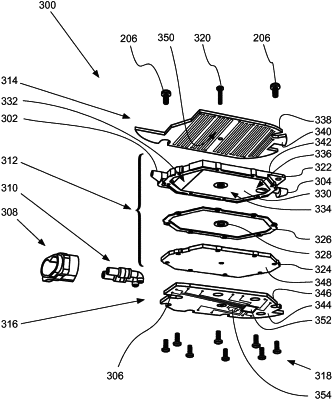| CPC A61M 5/44 (2013.01) [A61M 5/14 (2013.01); H05B 1/0227 (2013.01); H05B 1/0244 (2013.01); H05B 3/22 (2013.01); A61M 2205/3368 (2013.01); A61M 2205/3653 (2013.01); A61M 2205/8206 (2013.01); H05B 2203/021 (2013.01)] | 17 Claims |

|
1. An infusion fluid warmer comprising:
a DC power supply input,
a first carrier board comprising a first surface and a second, opposing, surface, wherein the second surface comprises a first integrally formed electrically resistive pattern,
a heat exchanger comprising an aluminium upper wall structure and a lower, opposing, wall structure separated by a fluid channel extending between fluid inlets and outlets of the heat exchanger; wherein the fluid channel extends substantially straight along a longitudinal axis of the heat exchanger; and
a controller for connecting the DC power supply input to the first integrally formed electrically resistive pattern, wherein an outer surface of the upper wall structure is thermally connected to the first resistive pattern, and that the controller is configured to:
connecting the DC power supply input to the first or second integrally formed electrically resistive pattern during a first time period to dissipate power in the first or second integrally formed electrically resistive pattern to thereby serve as a heating element during the first time period, wherein a width-to-thickness ratio of a central zone of the fluid channel is at least 50:1 or at least 175:1 or at least 350:1.
|